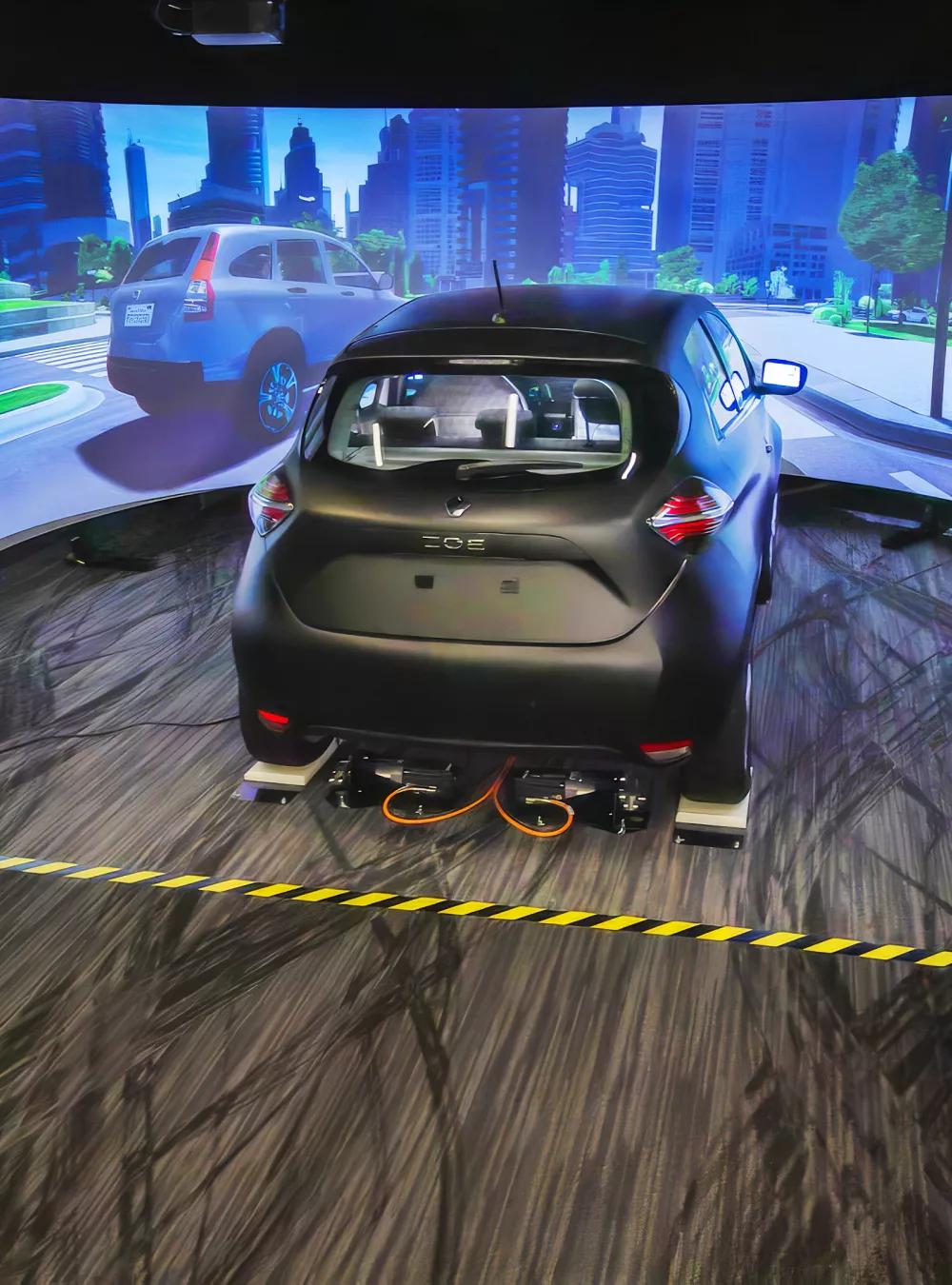Vehicles, environments, pedestrians, traffic signals. The MITRE DRIVE Lab can simulate all of it—together—providing insights previously unavailable to traffic safety researchers.

DRIVE Lab: Paving the Way to Safer Roadways in an Era of Increasing Automation
It takes millions of on-road miles to effectively test the safety of vehicle automation. MITRE offers an alternative.
The MITRE DRIVE Lab offers state-of-the-art simulation and data collection capabilities to speed the testing of our increasingly intelligent vehicles—safely and efficiently.
"Safety assurance in automated vehicles is very complex," says Joe Kolly, Ph.D., MITRE's Integrated Systems Innovation Center director. "It involves a lot of different organizations, a lot of different perspectives. MITRE, as a connector, is bringing those perspectives together—from across government and industry."
The DRIVE Lab—short for Driver Research for Intelligent Vehicles and Environments—enables transportation specialists to evaluate different levels of automation in a variety of environments. Using fully customizable scenarios, DRIVE enables users to see, feel, experience, and evaluate new transportation technology.
We’re giving stakeholders the insights they need to build a safer surface transportation ecosystem.
"The lab can simulate any type of vehicle and its driving capabilities, from conventional passenger cars with limited assistance systems to highly autonomous vehicles," says Paul MacWilliams, manager of MITRE's Human-Centered Research and Development department. "And it can generate customizable virtual environments, from city streets to highway networks."
Using virtual reality technology, the lab can also simulate various surface transportation interactions. For instance, it's capable of simulating interactions between differently equipped vehicles; highly automated vehicles and their drivers; vehicles and the environment; and vehicles and vulnerable road users, such as pedestrians and cyclists.
"What's special about the DRIVE Lab is that integration component," explains human-centered engineer Mac MacArthur, Ph.D. "By simulating the intersections between various types of vehicles and different environments, we're giving stakeholders the insights they need to build a safer surface transportation ecosystem."
The lab can also integrate with real vehicles and infrastructure, such as traffic lights, as well as simulators at external institutions. And it's part of a network of MITRE Labs that form an integrated and immersive testing environment.
"These interconnections enable researchers to easily work together to discover solutions to the complex issues that rapid technological changes are introducing," MacWilliams says. "By combining our collective expertise and producing evidence-based safety assurance cases, we can have greater impact on the future of transportation safety."
Join our community of innovators, learners, knowledge-sharers, and risk takers. View our Job Openings and Student Programs. Subscribe to our MITRE 360 Newsletter.